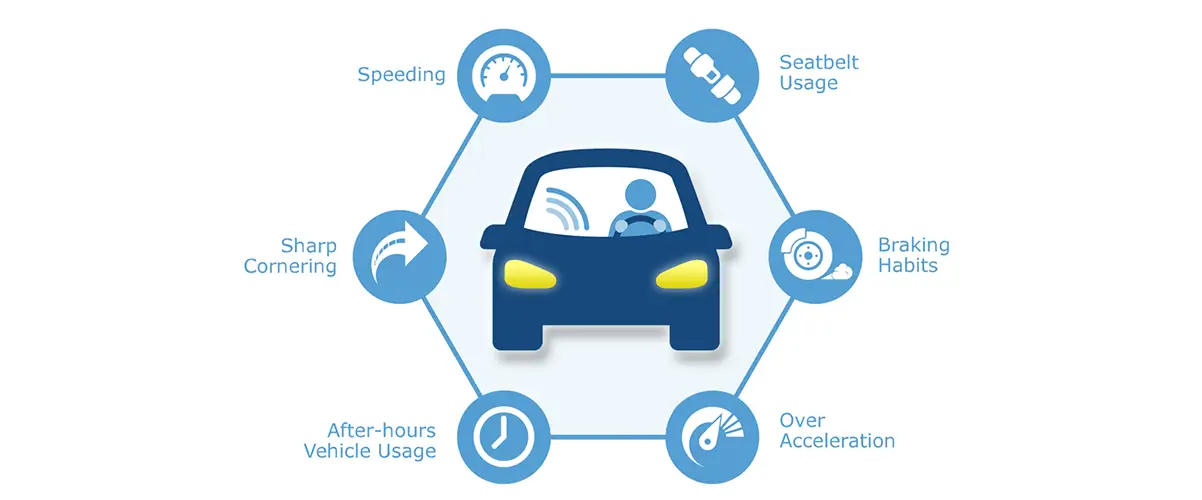
Fleet safety topics are critical for minimizing accidents and ensuring driver and vehicle safety. This article breaks down essential topics such as driver training, vehicle inspections, and the use of technology like fleet cameras. Understanding and implementing these topics can significantly enhance the safety of your fleet.
Table Of Contents
- Top Fleet Safety Topics for Ensuring Driver and Vehicle Protection
- Introduction
- Preventing Motor Vehicle Crashes
- The Dangers of Distracted Driving
- Conducting Effective Pre-Trip Inspections
- Managing Fatigue on the Road
- Speeding and Its Consequences
- Navigating Bad Weather Conditions
- Handling Road Rage
- Benefits of Fleet Cameras
- Post-Incident Procedures
- Health and Wellness for Drivers
- Sharing the Road with Cyclists
- Utilizing Advanced Driver Assistance Systems (ADAS)
- Implementing a Formal Fleet Safety Program
- The Importance of Management Commitment
- Using Fleet Safety Analytics
- Summary
- Frequently Asked Questions
Key Takeaways
- Comprehensive safety programs and defensive driving techniques, such as the three-second rule, are crucial for preventing fleet vehicle accidents and ensuring road safety.
- Addressing distracted driving, managing driver fatigue, and adhering to speed limits are essential practices for minimizing risks and enhancing driver and vehicle safety.
- Utilizing technology like fleet cameras and Advanced Driver Assistance Systems (ADAS), along with a formal fleet safety program backed by management commitment, significantly contributes to creating a safe and efficient fleet environment.
Top Fleet Safety Topics for Ensuring Driver and Vehicle Protection

We begin our exploration in the extensive domain of fleet safety. With fleet vehicle accidents standing as a leading cause of workplace fatalities, the importance of motor vehicle safety cannot be overstated. In fact, the span between 2003 and 2018 saw over 29,000 lives lost to vehicle crashes, a sobering statistic that underscores the need for comprehensive safety measures. It’s not just lives that are at stake, but also the very performance of your fleet, as accidents can cause significant disruptions, including the average workplace injury.
A range of safety meeting topics are deployed to address this, including:
- Coaching drivers
- Creating effective safety programs
- Adhering to the three-second rule for safe following distances
- Understanding the benefits of fleet cameras
By focusing on these areas, companies can remind drivers of the critical role they play in road safety. Each safety meeting topic is a gear in the machine that keeps your fleet running smoothly and safely.
Keep in mind, as we unearth each subject, that these aren’t mere checklist items; they’re lifelines that ensure the protection of your drivers and vehicles on every trip.
Introduction
The road to safety begins with a single step—or in the case of fleet management, a single conversation. Driver safety talks are the threads that weave through the fabric of a company’s safety culture, directly impacting the health and well-being of drivers and other road users. When drivers sit behind the wheel, they’re not just maneuvering a vehicle; they’re taking on a responsibility that extends far beyond the cargo they carry. Each decision, each moment of focus, and each adherence to safety protocols can mean the difference between a successful delivery and a catastrophic loss.
In the dynamic landscape of fleet operations, risks lurk around every corner—from the tangible, like equipment malfunctions, to the intangible, like driver distraction. It’s critical for businesses to equip their drivers with the training, knowledge, and tools necessary to navigate these hazards effectively. By doing so, companies not only protect their employees and assets but also contribute to the overall safety of the roads we all share. Armed with this understanding, we transition into dissecting the core of these topics, where each piece of knowledge serves as a vital component in the engine of motor vehicle safety.
Preventing Motor Vehicle Crashes

The specter of motor vehicle crashes looms large over the world of commercial driving, representing a grim chapter in the annals of fleet history with over 29,000 workplace fatalities linked to vehicle accidents. It’s a stark reminder that the road is an unforgiving place, where a moment’s lapse in attention or a minor miscalculation can lead to irreversible consequences. However, the narrative doesn’t have to be a tragic one. By embracing defensive driving and the principles of motor vehicle safety, we can write a different story—one where accidents are not the norm but the exception. Proper management of motor vehicle records can also contribute to this goal.
Consider the three-second rule, a cornerstone of safe driving recommended by Improv Learning. This simple yet effective guideline instructs drivers to maintain a minimum three-second gap between their vehicle and the one in front, providing a buffer that can be the difference between a close call and a collision. But it doesn’t end there; in adverse conditions, when the road is slick with rain or shrouded in fog, this following distance should be extended even further, becoming a lifeline that can pull drivers back from the brink of an accident. While we maneuver through the intricacies of fleet safety, let’s remember that these preventive measures are not just suggestions—they’re the bedrock upon which safe driving practices are built.
The Dangers of Distracted Driving

Amid the hum of the engine and the monotony of the highway, the temptation to divert our attention from the road can be a siren’s call. But distracted driving is a perilous path that leads to devastation. In 2022 alone, the lives of 3,308 people were cut short due to distracted drivers—a haunting statistic that speaks volumes about the risks associated with this behavior. The act of taking eyes off the road, hands off the wheel, or mind off the task of driving can have dire consequences, not just for the distracted driver but for everyone sharing the road.
To combat this, initiatives like the ‘Put the Phone Away or Pay’ campaign serve as a clarion call to drivers, warning of the legal and personal ramifications that await those who succumb to distractions. Yet, it’s not just about avoiding penalties; it’s about fostering a culture of attentiveness and responsibility. Driver safety meetings play a pivotal role in this endeavor, as they provide a platform to address the hazards of distracted driving and the company rules designed to mitigate them. As stewards of fleet safety, it is our duty to maintain vigilance, using every tool at our disposal—from coaching to technology—to ensure that when it comes to driving, our focus remains unbroken and our hands steadfast on the wheel.
Conducting Effective Pre-Trip Inspections
Before setting out on the open road, the ritual of the pre-trip inspection is as essential as the journey itself. Mandated by federal law, these comprehensive safety checks are the first line of defense against potential hazards that may lurk within a vehicle’s intricate systems. A thorough inspection can reveal issues that, if left unaddressed, could lead to breakdowns or, worse, collisions that compromise the safety and efficiency of the entire fleet. It’s an indispensable procedure that ensures the heartbeat of the vehicle—the engine, the brakes, the tires—remains strong and steady.
In the world of truck drivers, the daily pre-trip inspection is a sacred duty, a systematic review that follows a checklist as meticulously as a map, guiding them through each component that must be examined. Should any anomaly arise, it is incumbent upon the driver to report it with haste, for in the realm of fleet safety, communication is as vital as vigilance. Thus, upon completion of each inspection, drivers can embark on their routes with confidence, knowing that their vehicles are not just compliant with regulations but are also sanctuaries of safety on the wheels of commerce.
Managing Fatigue on the Road

As the miles stretch on and the hours tick by, fatigue can creep up on drivers like a shadow, subtle yet insidious. It’s a silent adversary that can dull the senses and slow reaction times, transforming a routine drive into a gauntlet of risk.With studies showing that up to 13% of commercial truck drivers are fatigued at the time of a crash, the importance of managing fatigue is as clear as the danger it poses. It’s not just about staying awake; it’s about maintaining a level of alertness that keeps both driver and vehicle safe from the perils of the road.
The remedies for fatigue are as straightforward as they are critical: adequate sleep before a long trip, regular rest breaks every two hours or 100 miles, and the presence of an awake passenger to share the burden of vigilance. Yet, even with these strategies in hand, drivers must recognize their own limits. At the first sign of drowsiness, the only responsible course of action is to stop driving immediately.
In the sphere of fleet safety, fatigue risk management is more than a mere suggestion; it’s a responsibility—one that every driver must uphold to safeguard their well-being and the lives of those around them.
Speeding and Its Consequences
Speed may offer a thrill, a rush of adrenaline that comes with pushing the limits, but on the road, it’s a gamble where the stakes are life itself. Nearly one-third of all car crashes in the United States are a result of speeding, a sobering statistic that illustrates the inherent risks of this reckless behavior. The equation is simple: the faster a vehicle travels, the greater the impact in the event of a collision, and the higher the likelihood of severe injuries or fatalities. It’s a chain reaction that can be avoided with a conscious decision to adhere to speed limits and to respect the laws of physics that govern our roads.
To prevent speeding-related crashes, drivers must:
- Give themselves ample time to reach their destinations without the need to rush
- Remain ever vigilant of the speedometer
- In adverse weather conditions, where visibility is low and roads are treacherous, reducing speed becomes not just a choice but a necessity
While we dissect the various aspects of fleet safety, let us remember that speeding is not just an infraction; it’s an act that can unravel countless lives in a matter of seconds. By choosing safety over speed, we choose life.
Navigating Bad Weather Conditions
When the skies darken and the elements unleash their fury, the road transforms into one of the most dangerous places a driver can be. Adverse weather conditions present a challenge that requires both preparation and adaptability, calling upon drivers to exercise caution and foresight. It’s not just about handling the vehicle; it’s about reading the environment, anticipating its whims, and adjusting one’s driving to match the capricious nature of the weather. Safety meetings play an invaluable role in this regard, offering guidance on how to navigate everything from torrential rains to blinding snowstorms.
The key lies in extending the three-second rule to account for the reduced traction and visibility that come with bad weather, creating a buffer that allows for longer reaction times. Moreover, understanding the power of nature is crucial—just a foot of rushing water can sweep a car away, a reminder of the respect we must accord to the forces we cannot control. While we journey through the terrain of fleet safety, let’s arm ourselves with the knowledge and skills necessary to weather any storm and emerge unscathed on the other side.
Handling Road Rage
The road can be a crucible of emotions, where frustration and anger simmer beneath the surface, threatening to boil over into road rage. It’s a phenomenon that can transform even the calmest driver into a maelstrom of aggression, escalating tensions and endangering everyone in proximity. However, the antidote to road rage is not beyond reach—it lies within our ability to:
- manage our emotions
- maintain a professional demeanor
- practice patience and empathy
- avoid aggressive behaviors
- focus on defensive driving techniques
By implementing these strategies, we can help create a safer and more harmonious driving environment for everyone.
Techniques such as deep breathing, mindfulness, and listening to calming music serve as tools to keep the tempest at bay, enabling drivers to navigate stressful situations with a clear head. Planning ahead to avoid peak traffic times and exploring alternate routes can also alleviate the pressures that often lead to confrontational behavior. Empathy, too, plays a role in diffusing potential conflicts, as it reminds us that every driver is facing their own battles.
On our journey towards enhanced fleet safety, handling road rage is not just about preventing altercations; it’s about fostering an environment where respect and patience reign supreme.
Benefits of Fleet Cameras

On our journey towards enhanced fleet safety, technology serves as a vigilant ally, and fleet cameras are its eyes. These devices offer a panoramic view into the reality of what occurs on the road and inside the cab, providing a dual perspective that can be critical in the aftermath of an accident. With the advent of AI video and G-force sensors, these cameras have evolved into sophisticated guardians, alerting drivers to risky behaviors and capturing footage that can exonerate the innocent or confirm culpability.
The presence of fleet cameras can lead to tangible benefits, including:
- Insurance savings
- A sense of protection for drivers who know their actions are documented and their safety is monitored
- Real-time feedback that can correct dangerous habits before they lead to disaster
Fleet cameras are not just passive recorders of events; they’re active participants in the safety ecosystem.
While examining the plethora of resources available to boost fleet vehicle safety, fleet cameras stand out as a powerful asset—a watchful eye that never blinks in the face of danger.
Post-Incident Procedures
The aftermath of a vehicular incident is a critical juncture where every action, every decision, carries weight. In these moments, clarity and composure must prevail, guiding drivers through the necessary steps to ensure proper documentation and reporting. The immediate priority is safety—moving the vehicle out of harm’s way if possible, and activating hazard lights to signal distress. But it’s the meticulous gathering of information that often proves most vital, from capturing the scene in photographs to exchanging insurance details with the other party involved.
Police involvement is not just a formality; it’s an essential part of the process, providing an official account of the incident that becomes a cornerstone of any subsequent investigation. And with the incident reported, it is imperative to notify the appropriate channels within the company, from supervisors to fleet management, ensuring that the incident is handled with the gravity and attention it deserves. Within the sphere of fleet operations, post-incident procedures represent more than a sequence of actions; they’re the threads that weave together a tapestry of accountability and responsibility, reaffirming a commitment to safety that extends beyond the incident itself.
Health and Wellness for Drivers
The rigors of the road don’t just test the mettle of the vehicles; they test the resilience of those behind the wheel. Truck drivers, in their pursuit of timely deliveries, often face a litany of challenges to their health and wellness—challenges that can be mitigated with the right strategies and support.
Nutrition is a cornerstone of good health, and meal planning can help drivers avoid the siren call of convenience foods, providing the energy needed for long hauls without the empty calories. Fitness, too, can find its place amid the expanse of asphalt, with walking trails at truck stops and in-cab exercises serving as an oasis of activity in a sedentary landscape.
But health is not solely a matter of the physical; it encompasses the mental and emotional realms as well. Social connections, whether with family, friends, or fellow travelers, act as a bulwark against the isolation that can come with life on the road. Mental stimulation through audiobooks or learning new skills keeps the mind engaged and alert, combating the monotony that can lead to inattention.
And with the support of wellness programs, drivers have access to resources that can guide them towards a healthier lifestyle, setting them on a path towards not just surviving their job but thriving within it. While we traverse the crossroads of driving and well-being, let us remember that the health of our drivers is as essential to fleet safety as the vehicles they operate.
Sharing the Road with Cyclists
The tapestry of the road is woven with a diverse array of travelers, and among them, cyclists add a splash of color to the monochromatic expanse of motor vehicles. Sharing the road with cyclists requires a heightened sense of awareness and a commitment to safety that transcends the boundaries between two wheels and four. As vehicles of greater mass and momentum, it is incumbent upon drivers to extend courtesies to their pedal-powered counterparts, ensuring that the dance of traffic is a ballet of cooperation rather than a clash of adversaries.
Driver safety meetings serve as the stage upon which the best practices for coexistence are choreographed, providing drivers with the knowledge they need to navigate this shared space safely. From the proper way to overtake a cyclist to the etiquette of checking for bikers before opening a door, these gatherings instill a respect for the rules of the road that protect all who travel upon it. In embracing these guidelines, drivers uphold not just their own safety but also the safety of those around them, ensuring that the road remains a place of passage rather than peril.
Utilizing Advanced Driver Assistance Systems (ADAS)
As we venture further into the 21st century, the vehicles that populate our roadways are becoming more than mere conveyances; they’re evolving into intelligent partners in the pursuit of safety. Advanced Driver Assistance Systems (ADAS) are the vanguard of this evolution, offering a suite of technologies that augment human skill with digital precision. Some key features of ADAS include:
- Pedestrian detection systems that serve as the eyes of the vehicle
- Emergency braking mechanisms that act as its reflexes
- Lane departure warning systems that help prevent accidents caused by drifting out of lanes
- Adaptive cruise control that adjusts the vehicle’s speed to maintain a safe distance from the vehicle ahead
- Blind spot detection systems that alert the driver to vehicles in their blind spots
ADAS represents a leap forward in collision avoidance and driver support.
But the benefits of ADAS extend beyond the immediate moments of crisis; they establish a foundation of safe driving habits that can prevent accidents before they even threaten to occur. Features like adaptive cruise control and lane keep assist act as vigilant co-pilots, maintaining safe distances and ensuring that the vehicle remains within the bounds of its lane. As fleet operators consider the potential for ADAS to enhance their operations, they find not just a series of tools but a transformative force—one that promises a future where the road is a place of security, guided by the steady hand of technology.
Implementing a Formal Fleet Safety Program
The keystone of a robust fleet safety culture lies in the establishment of a formal fleet safety program—a blueprint for accident prevention that is as comprehensive as it is critical. Such a program is the embodiment of a company’s commitment to safety, a document that is signed off by top executives and shared with every driver under their charge. It is a living document, one that evolves with the industry and the insights gleaned from safety meetings, driver feedback, and the inevitable lessons of the road.
But a fleet safety program is not a static entity; it is a dynamic framework that incorporates ongoing training, performance monitoring, and the continuous refinement of policies and protocols. It is the soil from which a safety culture grows, enriched by the nutrients of driver identification, risk assessment, and the unwavering support of management.
While we delve into the numerous aspects of fleet safety, let us not forget that these programs are the foundation upon which all other safety initiatives are built—a foundation that ensures the health and prosperity of the fleet and all who rely on it.
The Importance of Management Commitment
The compass that guides a fleet safety program towards its true north is the unwavering commitment of management. It is an element that cannot be overstated, for without the earnest backing of those at the helm, a safety program can quickly drift into the doldrums of ineffectuality. This commitment manifests in visible and tangible ways, from the signatures on policy statements to the resources allocated for safety initiatives. It is the wind in the sails of the fleet, propelling it forward with a clear vision and a steady hand.
Management’s role in fostering a safety culture is as much about actions as it is about words. It’s about taking the time to engage with drivers, to discuss safety informally and demonstrate its importance through every decision and directive. By integrating safety into the fabric of the business, it becomes not just a priority but a value—a core aspect of the company’s identity that resonates through every level of the organization. On the path to a safer fleet, management’s role cannot be demoted to a peripheral part; it must be at the forefront, leading by example and driving the message home that safety is the foundation upon which all else is built.
Using Fleet Safety Analytics
Within the expansive sea of fleet operations, data operates as a guide and a chart, guiding companies towards safer, more efficient practices. Fleet safety analytics harness this data, transforming it into actionable insights that can steer a company away from the shoals of risk and towards the safe harbors of compliance and excellence. With real-time monitoring and predictive analytics, fleet safety analytics shine a light on the path ahead, illuminating potential hazards and providing the foresight needed to avoid them, ultimately contributing to fleet efficiency.
The true power of analytics lies in its ability to inform continuous improvement. Through driver scorecards and incident analysis, analytics offer a mirror in which companies can see not just their current state but the trajectory of their journey towards safety. By investing in these tools, fleet operators unlock cost savings, improve driver behavior, and enhance the overall performance of their operations—a testament to the adage that knowledge is power, and in the realm of fleet safety, that power saves lives.
Summary
As we draw this exploration to a close, we reflect on the journey through the landscapes of fleet safety—a journey marked by the shared commitment to protect drivers and vehicles alike. From the foundational practices of conducting pre-trip inspections and managing fatigue to the technological advancements of ADAS and fleet cameras, each topic we’ve traversed is a piece of a larger mosaic. Together, they form a comprehensive approach to fleet safety that transcends individual actions, fostering a culture where safety is not just a protocol but a promise—a promise to uphold the highest standards of well-being for all who take to the road.
Frequently Asked Questions
How often should driver safety meetings be held?
Driver safety meetings should be held regularly, with monthly or quarterly meetings being recommended based on the specific needs of the business or industry. This frequency ensures that safety concerns are addressed in a timely manner.
What are the benefits of implementing ADAS in fleet vehicles?
Implementing ADAS in fleet vehicles can enhance safety, prevent accidents, maintain safe driving habits, and potentially reduce collision risks, which may lead to lower insurance premiums.
What is the importance of a formal fleet safety program?
A formal fleet safety program is important because it provides structured guidelines and expectations for safety, demonstrates a company’s commitment to accident prevention, and is crucial for continuous safety improvement. It helps ensure the safety of drivers and protects the company from potential risks.
How can fleet safety analytics improve fleet operations?
Fleet safety analytics can improve fleet operations by providing data-driven insights into driver behavior and vehicle performance, leading to predictive risk management, performance monitoring, and cost savings through improved safety and efficiency.
Why is management commitment important in fleet safety?
Management commitment is important in fleet safety because it sets the tone for safety practices, ensures resources are allocated for safety initiatives, and integrates safety into the company’s culture. This ultimately creates a safer work environment for everyone involved.

